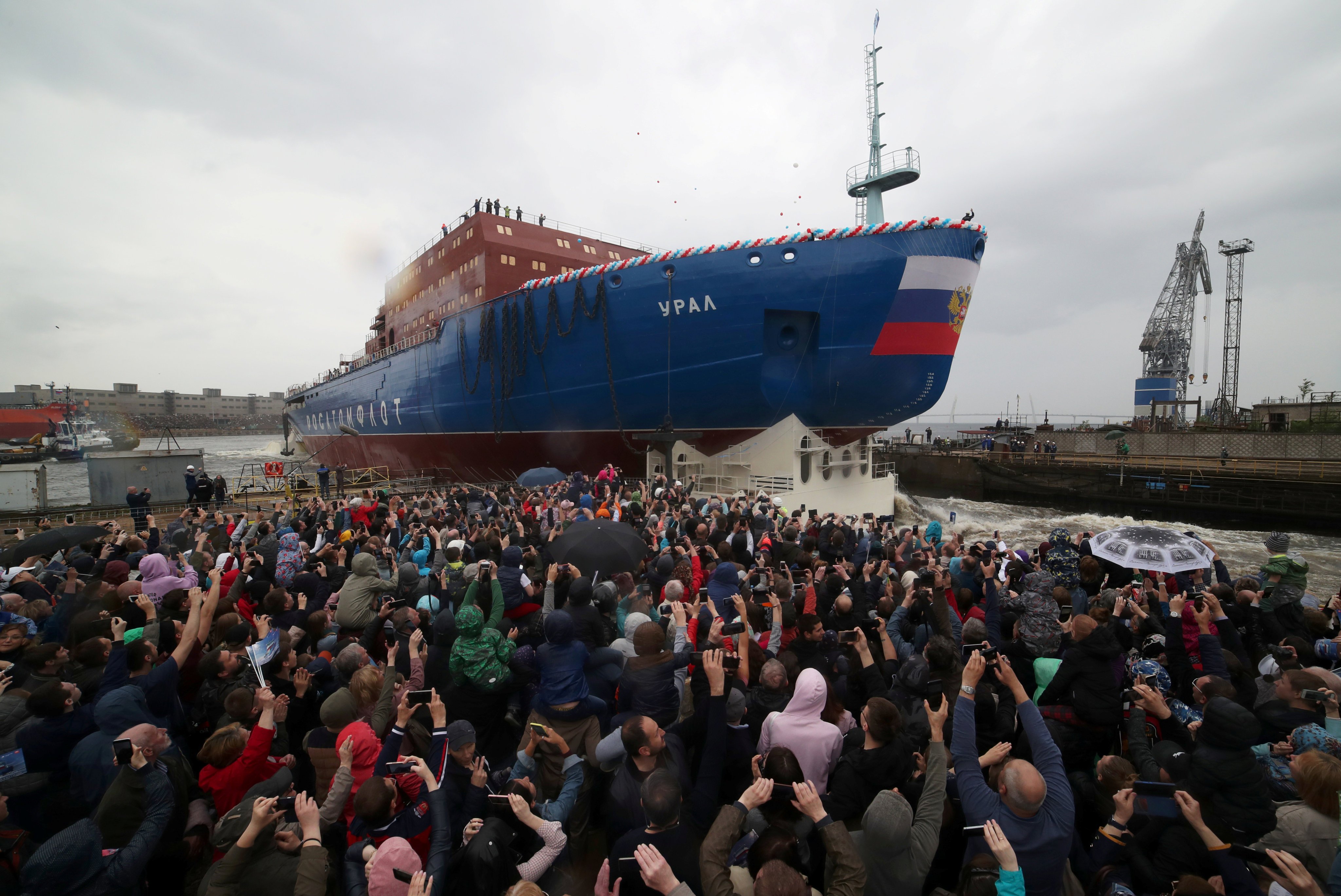How China is driving a surge in shipping along Arctic sea routes
The route’s Russian operator is building more nuclear-powered icebreakers, as it anticipates a significant rise in voyages by Chinese companies

Chinese companies are showing growing interest in shipping goods to the West via the Northern Sea Route – an icy Arctic passage that opens up each summer – according to Rosatom, the Russian company that operates infrastructure along the route.
The firm anticipates a significant uptick in voyages by Chinese companies along the NSR during the coming summer-autumn shipping season, and is adding more nuclear-powered icebreakers to its fleet to handle the growing traffic flow.
Cargo traffic on the NSR – the shortest shipping link between the Asia-Pacific region and western Eurasia – is steadily increasing, Rosatom told the Post via email. In 2024, a record 92 transit voyages were completed, carrying more than 3 million tonnes of cargo.
“In 2025, companies from China plan to make at least one and a half times more trips along the NSR than last year,” Rosatom said, though it did not provide specific numbers for Chinese companies’ voyages.
Cargo data showed that Russia’s energy exports to China currently dominate transit shipping along the NSR, with 95 per cent of all transit shipments moving from Russia to China in 2024, according to the Centre for High North Logistics, an Arctic transport institute affiliated with Norway’s Nord University.
Crude oil remained the main cargo, accounting for 1.89 million tonnes of goods shipped along the route last year. Bulk commodities such as iron ore, coal and fertiliser made up the second-largest cargo source, with 877,000 tonnes.
The main cargo being shipped from China to Russia, meanwhile, included auto parts, construction equipment and materials, passenger cars, clothing, footwear and chemical products, according to the data.
Rosatom, which operates the world’s only fleet of nuclear-powered icebreakers, plans to add another four vessels to escort ships along the Arctic passage, bringing its total fleet to 12.
Russia continues to promote the potential of the NSR – which has the potential to cut Asia-Europe transit times by up to 40 per cent – but progress on developing the route has slowed since the start of the war in Ukraine, which triggered a wave of Western sanctions targeting Russia, experts told the Post.
In March, Russian President Vladimir Putin told the International Arctic Forum that Russia would “consolidate our leadership in this sector by building new-generation icebreakers, including nuclear icebreakers”.
He also dismissed concerns over some Western countries withdrawing cooperation on Arctic issues, saying: “Don’t do it if you don’t want it. We will work with those who want it.” He pointed to China, Belarus and the United Arab Emirates as examples of countries continuing to show a “keen interest” in developing Arctic transport.
However, China-Russia cooperation on the route remains limited in reality, according to Gorild Heggelund, a research professor at Norway’s Fridtjof Nansen Institute.
“Currently, projects along the NSR have not materialised despite fine speeches from the two countries’ leaders. Reasons may be a lack of trust between the nations on lower levels as well as economic profitability,” she said.
The NSR requires significant investment to build and upgrade ports and related infrastructure, but Chinese stakeholders appear to be losing belief in its economic potential, especially due to concerns over secondary sanctions, she noted.
Chinese state-owned shipping company COSCO halted sailings along the NSR after Western countries introduced Russian sanctions in 2022. Currently, only a few smaller, privately-owned Chinese shipping firms continue to use the route.
But there may be an increase in activity and investment in the coming years, with China and Russia establishing a sub-commission focusing on NSR development last August, Heggelund said.
The NSR could be strategically important to China as an alternative shipping route, but it is unlikely to become a major shipping lane due to the harsh natural conditions and weak port infrastructure, according to a Chinese maritime scholar, who spoke anonymously due to university media policies.
Geopolitical tensions also pose major challenges, he said.
In its July 2024 Arctic Strategy, the US Department of Defense noted that China was seeking greater access and influence in the region. It also said that China’s collaboration with Russia on Arctic issues had “implications for the security of the United States and our allies and partners”.